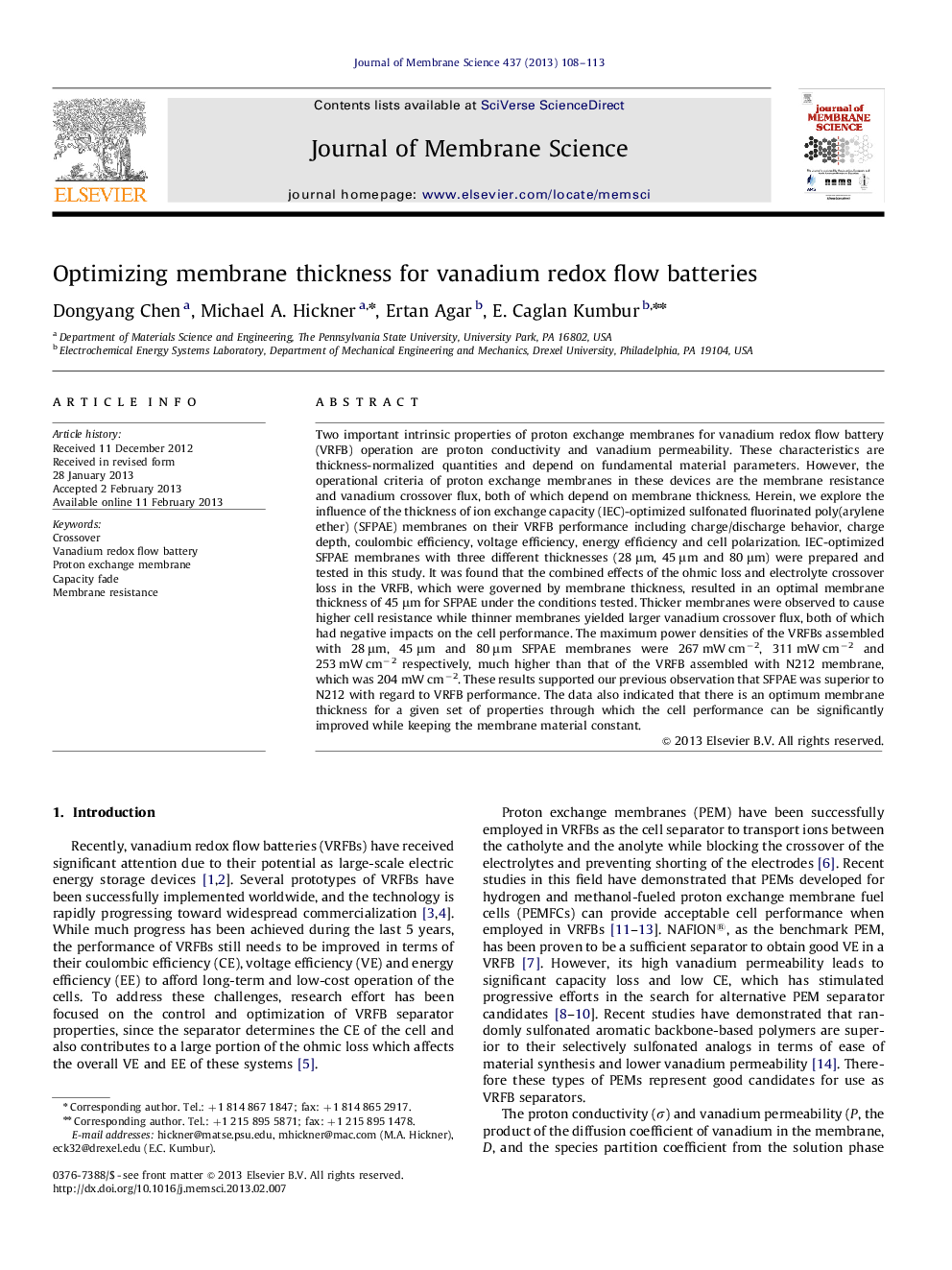| کد مقاله | کد نشریه | سال انتشار | مقاله انگلیسی | نسخه تمام متن |
|---|---|---|---|---|
| 634301 | 1456062 | 2013 | 6 صفحه PDF | دانلود رایگان |

Two important intrinsic properties of proton exchange membranes for vanadium redox flow battery (VRFB) operation are proton conductivity and vanadium permeability. These characteristics are thickness-normalized quantities and depend on fundamental material parameters. However, the operational criteria of proton exchange membranes in these devices are the membrane resistance and vanadium crossover flux, both of which depend on membrane thickness. Herein, we explore the influence of the thickness of ion exchange capacity (IEC)-optimized sulfonated fluorinated poly(arylene ether) (SFPAE) membranes on their VRFB performance including charge/discharge behavior, charge depth, coulombic efficiency, voltage efficiency, energy efficiency and cell polarization. IEC-optimized SFPAE membranes with three different thicknesses (28 μm, 45 μm and 80 μm) were prepared and tested in this study. It was found that the combined effects of the ohmic loss and electrolyte crossover loss in the VRFB, which were governed by membrane thickness, resulted in an optimal membrane thickness of 45 μm for SFPAE under the conditions tested. Thicker membranes were observed to cause higher cell resistance while thinner membranes yielded larger vanadium crossover flux, both of which had negative impacts on the cell performance. The maximum power densities of the VRFBs assembled with 28 μm, 45 μm and 80 μm SFPAE membranes were 267 mW cm−2, 311 mW cm−2 and 253 mW cm−2 respectively, much higher than that of the VRFB assembled with N212 membrane, which was 204 mW cm−2. These results supported our previous observation that SFPAE was superior to N212 with regard to VRFB performance. The data also indicated that there is an optimum membrane thickness for a given set of properties through which the cell performance can be significantly improved while keeping the membrane material constant.
Figure optionsDownload high-quality image (229 K)Download as PowerPoint slideHighlights
► Thickness optimized vanadium redox flow battery separators improve power density.
► In-cell ionic resistance and vanadium permeability are important membrane metrics.
► Cell resistance and vanadium permeability show a tradeoff in battery performance.
► Sulfonated aromatic proton exchange membranes show better performance than NAFION.
Journal: Journal of Membrane Science - Volume 437, 15 June 2013, Pages 108–113